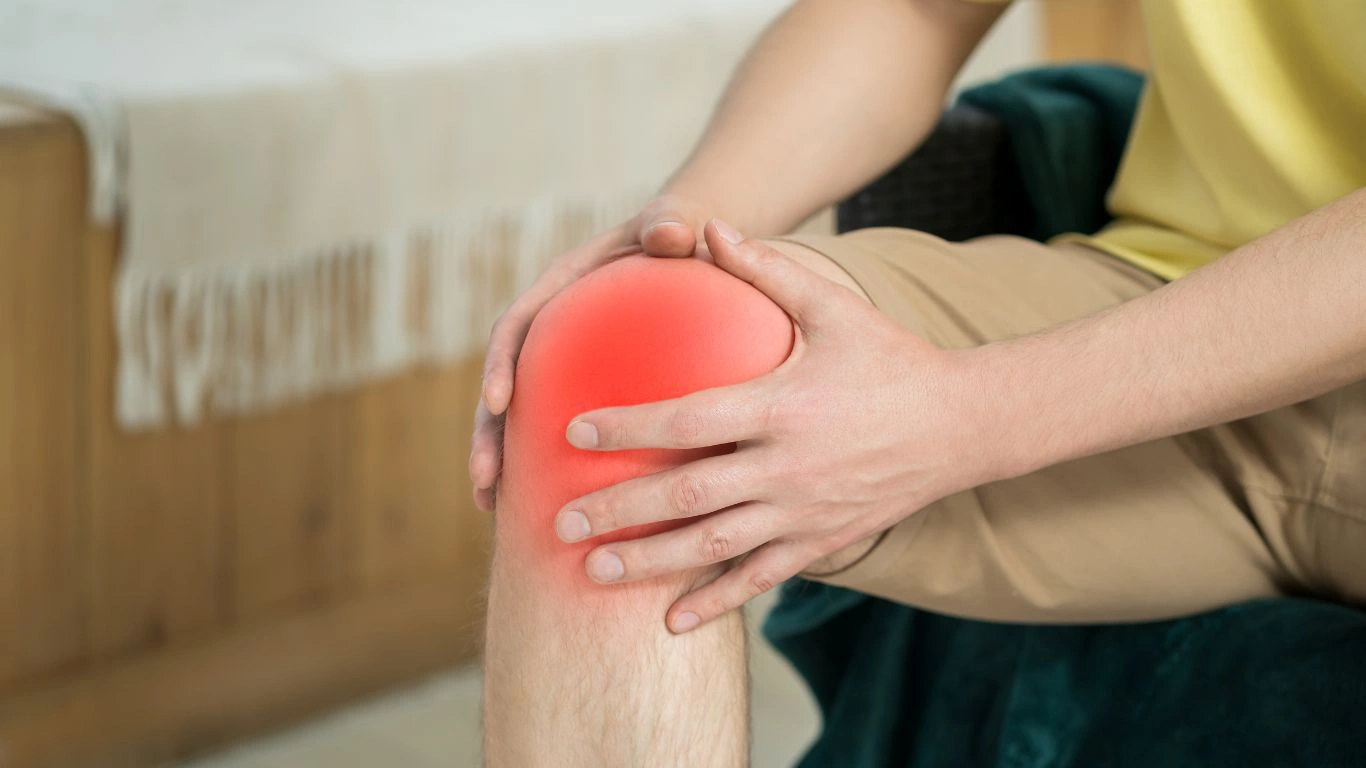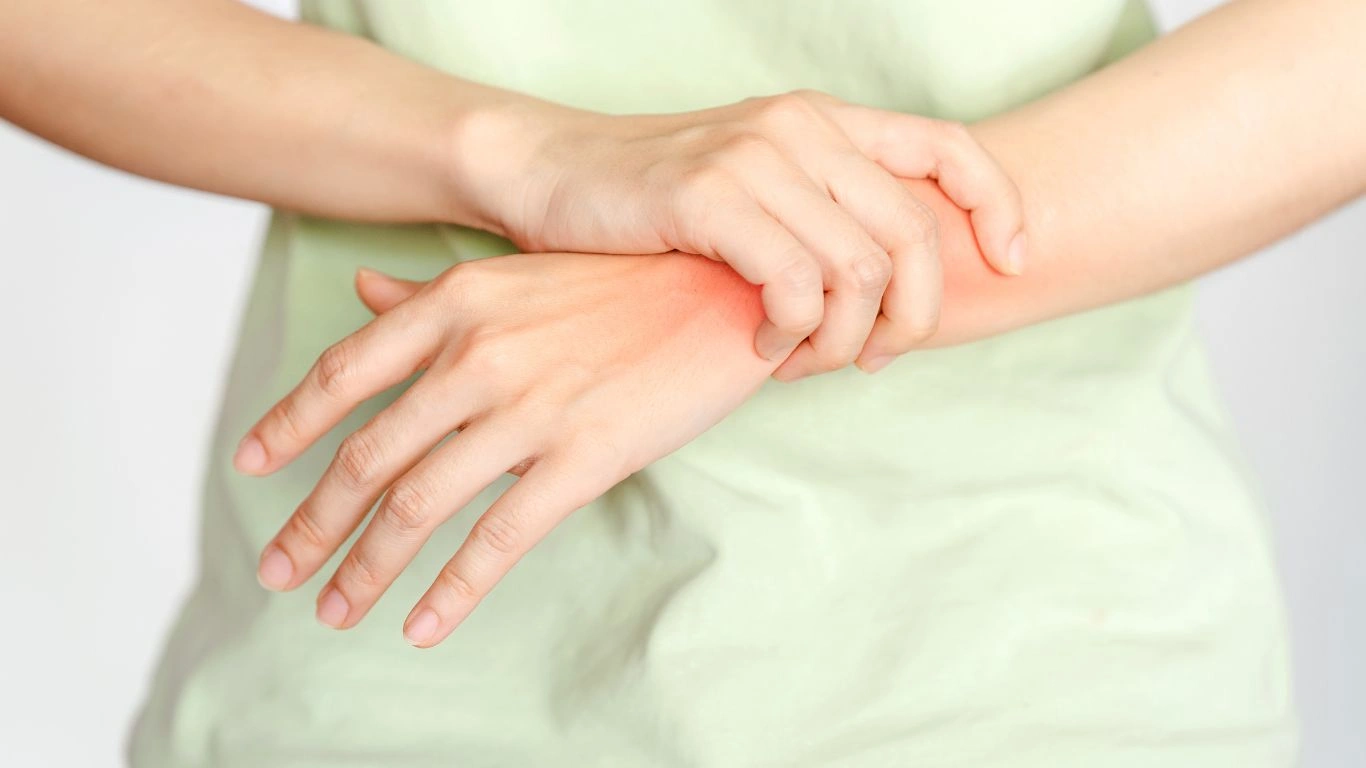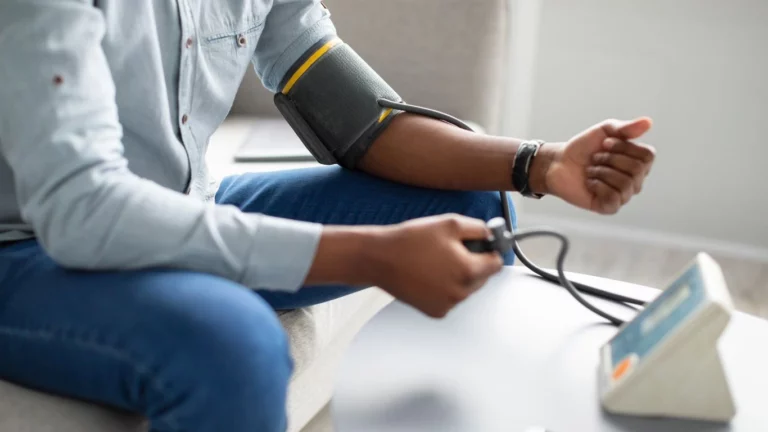Rheumatoid Arthritis and Mobility Tips: How to Keep Active and Healthy as You Age
As a Rheumatology Nurse Practitioner, I’ve seen firsthand the challenges faced by patients with rheumatoid arthritis (RA). It’s a condition that doesn’t just affect joints; it impacts daily life in ways that can be difficult to describe. But here’s the thing: despite the discomfort and restrictions that RA can bring, there’s still hope for maintaining mobility and an active lifestyle, especially as we age. The key lies in early intervention, tailored treatments, and strategies to protect those precious joints. So, how do you keep moving when rheumatoid arthritis starts to take its toll? Let’s dive into some practical insights.
Understanding Rheumatoid Arthritis and Its Impact on Mobility
Rheumatoid arthritis (RA) is a chronic autoimmune disease that primarily targets the joints. Unlike osteoarthritis, which results from wear and tear over time, RA occurs when your immune system mistakenly attacks the lining of your joints, leading to inflammation, pain, and swelling. As the disease progresses, it can lead to permanent joint damage and deformities. The effect on mobility can be profound, especially in the hands, knees, and feet, which are essential for daily tasks like walking, driving, or even picking up a cup of coffee.

One of the most frustrating aspects of RA is that it doesn’t just hurt—it often steals away your freedom. It can make you feel like you’re losing the ability to do the things you love, or even the simple things like getting out of bed or taking a walk around the block. However, it’s important to understand that while rheumatoid arthritis is a life-long condition, it doesn’t mean you can’t live a full, active life. With the right tools and strategies, maintaining mobility is possible, even as you age.
What Happens to Your Joints with Rheumatoid Arthritis?
RA starts in the joints, and over time, the inflammation can wear down the cartilage and bones, causing deformities. In the early stages, people may notice pain and swelling that comes and goes, but as the disease progresses, the symptoms tend to become more constant and can affect multiple joints simultaneously. This constant inflammation also leads to stiffness, particularly after resting, which can severely limit mobility. It’s not uncommon for people with RA to wake up feeling like their joints are “locked up” or like they can’t move freely.
In my experience, it’s easy for patients to feel defeated by these symptoms, especially when they notice their joints becoming less functional. However, understanding the process of joint damage and how RA affects your body can help you make informed decisions about treatment and lifestyle changes that can keep your joints as healthy as possible for longer. You don’t need to wait until you’re unable to do something before taking action—prevention and management are key.
Maintaining Mobility with Rheumatoid Arthritis
When I talk to my patients, one of the most common concerns I hear is, “How do I keep moving?” Whether it’s walking, swimming, or just staying active throughout the day, maintaining mobility with RA is crucial for overall health. Regular movement doesn’t just help preserve joint function, it can also boost mood, reduce stiffness, and keep your muscles strong, which can make a significant difference in how you feel on a day-to-day basis.
Start with Gentle Movement
Many people think that staying active with RA means pushing through intense exercise, but that’s not the case at all. The key is to start slow and listen to your body. Gentle exercises like stretching, yoga, and water aerobics can help reduce stiffness and keep your joints flexible without putting too much strain on them. In fact, I recommend low-impact activities to my patients because they are gentle on the joints but still provide plenty of benefits. Swimming, for example, is a fantastic way to stay active without putting any weight on your joints—plus, the water supports your body, making it easier to move.
If you’ve never tried swimming or water aerobics, I highly encourage you to give it a shot. It’s one of the best ways to get your body moving while minimizing the impact on your joints. I’ve had patients report that even just a few weeks of regular sessions made a huge difference in their pain levels and overall mobility.

Strengthening Muscles to Support Joints
One of the best ways to maintain mobility and protect your joints is to strengthen the muscles around them. Strong muscles help absorb some of the pressure and prevent joint damage. That’s why I always encourage my patients to incorporate strength training into their routine, but again, it’s important to do so in a way that doesn’t overstrain the body.
Simple exercises using resistance bands or light weights can make a big difference. For instance, if your knees are affected by RA, exercises like leg lifts and squats (done in moderation) can help strengthen the muscles surrounding the knee joint, improving stability and reducing pain. Remember, these exercises don’t need to be intense or long-lasting. Just a few minutes a day can go a long way in keeping your joints supported.
Addressing Pain While Staying Active
I get it—when you’re dealing with joint pain, it’s hard to feel motivated to move. But the good news is, there are many ways to manage RA pain while staying active. Pain management strategies can help you stay comfortable and keep your joints moving. Over-the-counter pain relievers, topical creams, and anti-inflammatory medications can help control pain and swelling, and your doctor can also prescribe stronger medications if needed.
Another method that has worked wonders for some of my patients is using heat or cold therapy. Applying a warm compress or soaking in a warm bath can help ease stiffness and relax muscles, while ice packs can reduce swelling after exercise. These simple remedies can provide relief and allow you to engage in daily activities more comfortably.

At the end of the day, the goal is to find what works for you and your body. Every person with RA is different, and what helps one person might not be effective for someone else. The key is to work with your healthcare team to develop a plan that keeps you moving while minimizing pain and inflammation.
Why Regular Checkups Are Crucial
Another important factor in maintaining mobility as you age with RA is to stay on top of your treatment and regularly visit your healthcare provider. RA can change over time, and so can your treatment needs. Regular checkups allow you and your healthcare team to monitor the disease’s progression and adjust medications or therapies as needed. This proactive approach ensures that you’re always doing everything you can to protect your joints and maintain mobility.
Using Assistive Devices to Improve Mobility
As we discussed earlier, maintaining mobility with rheumatoid arthritis is possible, but it requires the right tools. One of the most effective ways to stay active and independent is by using assistive devices. These may seem like a crutch (pun intended!), but they can significantly enhance your ability to move, reduce strain on your joints, and make daily tasks more manageable.
In my practice, I’ve seen how a well-chosen assistive device can make a huge difference. For example, something as simple as a cane or walker can help reduce the pressure on your knees, hips, or back, especially when you’re walking for longer periods. Similarly, grab bars in the bathroom or handrails in your home can provide support while standing or walking, making those everyday activities safer and less daunting.

It’s important to note that assistive devices don’t mean you’re giving up your independence—far from it! They are just tools to help you maintain your active lifestyle and keep you doing the things you love. Sometimes, all it takes is a little adjustment to your routine or environment to keep moving without feeling burdened by your condition.
Modifying Your Environment for Better Mobility
Along with assistive devices, another great way to protect your joints and maintain mobility is by modifying your living space. These small changes can go a long way in preventing unnecessary strain on your joints and making your daily tasks easier to accomplish.
For instance, in the kitchen, using lighter cookware or installing pull-out shelves can reduce the need for bending and reaching. Adding chairs or stools in areas where you need to stand for long periods can give you a place to rest and relieve pressure on your joints. Similarly, using an elevated toilet seat or a shower chair can make bathing and using the restroom much more comfortable.
I’ve worked with patients who have told me that these little modifications have made their homes feel more accessible and safe, helping them move with more ease. It’s all about creating an environment that supports you and your needs so you can stay independent and active for as long as possible.
Medications and Treatments to Help You Stay Mobile
When it comes to managing rheumatoid arthritis and maintaining mobility, medications play a crucial role. They don’t just help manage the pain; they can also prevent further joint damage and help keep you moving without constant discomfort. While I’m not a doctor, I’ve seen how certain medications can have a profound impact on a person’s quality of life and mobility.
For many RA patients, disease-modifying antirheumatic drugs (DMARDs) are the cornerstone of treatment. These drugs work by suppressing the immune system to prevent it from attacking the joints. The goal is to slow the disease’s progression and preserve joint function. There are also biologic drugs that target specific parts of the immune system, and they can be particularly helpful for people whose RA doesn’t respond well to traditional DMARDs.

As part of the treatment, I always remind my patients to keep their doctors informed about any side effects or concerns with medications. This feedback helps in fine-tuning the treatment plan. Medication isn’t the only answer, though. Combining medication with physical therapy, joint protection techniques, and proper rest can help optimize the benefits and keep you feeling your best.
Physical Therapy: The Importance of Tailored Exercises
If there’s one thing that I can’t stress enough, it’s the importance of physical therapy for RA patients. Physical therapists can work with you to design a personalized exercise plan that focuses on strengthening muscles, improving flexibility, and increasing mobility. I’ve seen firsthand how a well-structured physical therapy program can drastically improve the daily lives of those with RA.
It’s not about pushing yourself to the limits; it’s about making small, sustainable progress. The exercises are typically low-impact, and the therapist will focus on your specific needs, helping you build strength around the joints that are most affected by RA. The goal is to maintain or even improve your range of motion, reduce stiffness, and prevent further joint damage.
Staying Active Through Pain Flare-Ups
Let’s face it—pain flare-ups are part of living with rheumatoid arthritis. They can happen suddenly and feel discouraging, but it’s important to know that you can still maintain mobility even during these tough times. The key is managing flare-ups properly and adjusting your routine accordingly. If you’re experiencing increased pain or swelling, you might need to take it easy for a short time. However, that doesn’t mean you should completely stop moving.
During flare-ups, I encourage my patients to focus on gentle, range-of-motion exercises. Stretching, light walking, or even some water exercises can help keep your joints moving without putting them under unnecessary stress. And don’t forget about the power of rest—sometimes, the best way to keep moving in the long term is to listen to your body and give it the time it needs to recover.

It can be frustrating when you feel like you’re taking two steps forward and one step back, but I always remind my patients that consistency is key. Even on bad days, maintaining some level of activity (no matter how small) is important. It’s about building resilience, and that resilience will make a huge difference when the flare-ups subside.
Keeping a Positive Mindset
Now, let’s talk about the mental side of maintaining mobility with rheumatoid arthritis. I won’t sugarcoat it—RA can be mentally and emotionally draining. There will be days when you feel like giving up, but maintaining a positive mindset is one of the most powerful tools you can have in your arsenal. Believe me, I’ve seen the impact that a hopeful attitude can have on a patient’s journey with RA.
One thing I always remind myself and my patients is that, while RA may change the way we live, it doesn’t define us. It’s possible to lead a full and active life, even with rheumatoid arthritis. Finding the right support system—whether it’s through family, friends, or support groups—can help you stay positive and motivated. Sometimes, just knowing you’re not alone in this journey can make all the difference.
The Role of Nutrition in Managing Rheumatoid Arthritis
We all know that what we eat plays a major role in our overall health, but did you know it can also impact how rheumatoid arthritis affects your mobility? Nutrition isn’t just about fueling the body; it’s about providing the nutrients that help combat inflammation and support joint health. After working with countless patients in my practice, I’ve seen how making dietary adjustments can significantly improve RA symptoms and, in some cases, even reduce flare-ups.
While no single food can cure rheumatoid arthritis, a well-balanced, anti-inflammatory diet can help manage symptoms and boost your energy levels. Foods rich in omega-3 fatty acids, such as fatty fish like salmon, sardines, and mackerel, can help reduce inflammation in the body. I often recommend incorporating these into meals for their beneficial effects on joint health. I also encourage my patients to load up on fruits and vegetables. These foods are packed with antioxidants, vitamins, and minerals that can help reduce oxidative stress and inflammation.

On the flip side, there are certain foods you should try to limit or avoid. Processed foods, sugary snacks, and refined carbohydrates can all contribute to inflammation, potentially worsening RA symptoms. That’s why I always tell my patients to focus on whole foods—fresh vegetables, lean proteins, and healthy fats, like those from avocados and nuts. A balanced, anti-inflammatory diet isn’t just about reducing pain; it’s about keeping your body strong and energized, so you can keep moving with ease.
Supplements That Can Help
In addition to a healthy diet, some patients with rheumatoid arthritis find relief through supplements. One of the most commonly recommended supplements for RA is fish oil. The omega-3 fatty acids in fish oil have been shown to help reduce inflammation, which is key for managing RA. Another supplement that’s worth mentioning is glucosamine, which helps support joint health and repair cartilage. For some, adding glucosamine to their routine can provide a noticeable improvement in mobility and pain reduction.
Of course, always consult your healthcare provider before adding any supplements to your regimen. What works for one person may not work for another, and your healthcare team can help guide you in finding the right combination for your specific needs. Remember, managing RA is a holistic process, and diet and supplements are just a part of the bigger picture.
The Importance of Mental Health in Living with RA
Living with rheumatoid arthritis isn’t just a physical challenge—it’s an emotional one too. As a nurse practitioner, I’ve witnessed how the emotional toll of living with a chronic condition can sometimes be more overwhelming than the physical pain. Depression, anxiety, and frustration are common among those with RA, especially when mobility becomes more limited, or flare-ups increase.
But here’s something I tell my patients: maintaining a positive mindset and addressing mental health is just as important as managing the physical symptoms of RA. Stress can worsen inflammation in the body, making pain and stiffness even more difficult to manage. By finding ways to reduce stress and care for your mental well-being, you can improve your physical health, too. Yoga, meditation, and mindfulness practices have been shown to help reduce stress and promote relaxation, which in turn can help alleviate some of the symptoms of rheumatoid arthritis.
It’s also crucial to have a strong support network. I encourage patients to reach out to family and friends, join support groups, or even talk to a counselor. Sometimes, just having someone to talk to can make all the difference. I’ve seen many patients whose outlook on life improved when they connected with others who understood their struggles. This emotional support can help you stay motivated, focused on your treatment plan, and most importantly, keep you moving.

References
For more information on rheumatoid arthritis and its management, check out these trusted resources:
Disclaimer
The content of this article is intended for informational purposes only and should not be considered medical advice. While I, as a Rheumatology Nurse Practitioner, provide insights based on my professional experience, it’s important to consult with your healthcare provider before making any changes to your treatment plan, diet, or lifestyle. Everyone’s experience with rheumatoid arthritis is unique, and a personalized approach to managing your condition is essential. Always follow the advice of your healthcare team.

Tarra Nugroho is a dedicated Nurse Practitioner with a strong foundation in family and preventive care. She brings both compassion and clinical expertise to her practice, focusing on patient-centered care and health education. As a contributor to Healthusias.com, Tarra translates medical knowledge into clear, empowering articles on topics like women’s health, chronic disease management, and lifestyle medicine. Her mission is simple: help people feel seen, heard, and informed—both in the clinic and through the content she creates. When she’s not caring for patients, Tarra enjoys weekend hikes, plant-based cooking, and curling up with a good health podcast.





